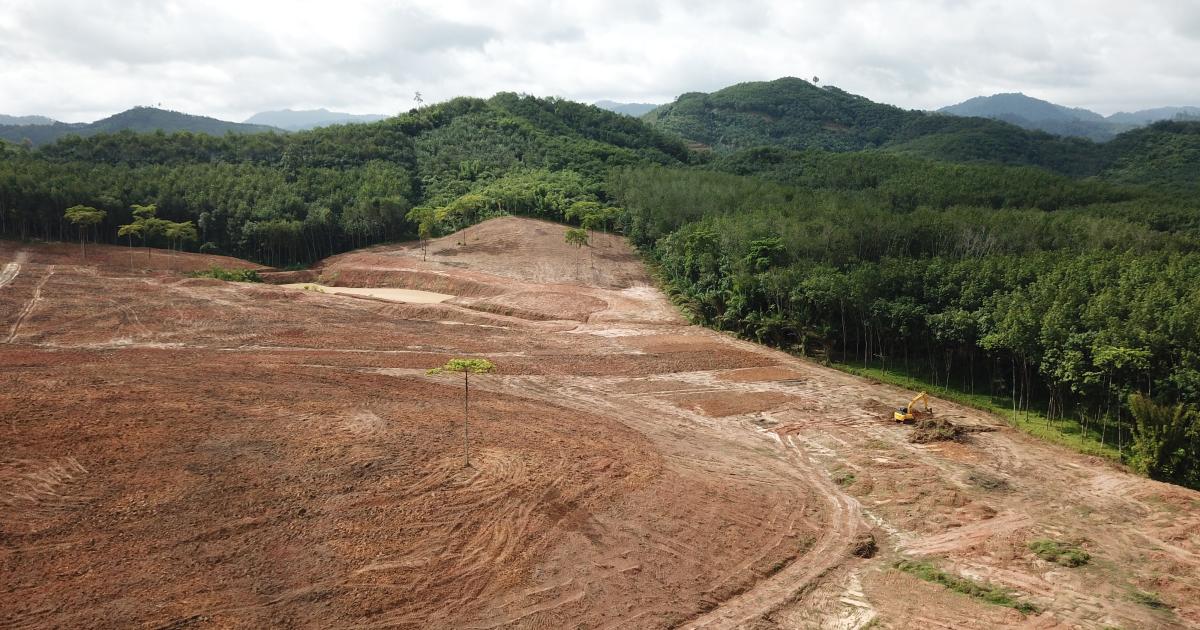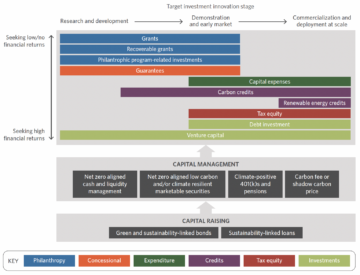
This article is sponsored by Accountability Framework initiative.
Even as the dual crises of climate change and biodiversity loss become ever more urgent, banks continue to pump $30 billion to $50 billion a year into activities that drive the majority of tropical deforestation. And that’s not counting capital from asset managers, pension funds, institutional investors and other financial institutions.
While financing of deforestation has been business-as-usual for decades, there are signs of change. Leading financial institutions are beginning to chart a way forward, while laggards ignore escalating risk at their peril.
This risk ties back to negative impacts on the ground. When exposed to environmental and social harms in their operations or supply chains, companies can face legal, market, operational, regulatory and reputational risks that threaten financial performance. For financial institutions, having risky companies in their portfolios can translate into negative returns on investments, defaults on loans or losses due to stranded assets.
And while deforestation is but one of many ESG issues on companies’ radar, it is among the most salient for financial institutions to understand and manage. That’s because, in addition to being a major risk in its own right, deforestation is a leading driver of greenhouse gas emissions and contributor to human rights abuses in the soft commodities sector.
To address these risks, financial institutions must engage with the companies in their portfolios. Fortunately, there is no need for them to reinvent the wheel. Instead, they can adapt approaches that have already worked for companies in forest-risk commodity sectors. Financial institutions can build from these companies’ experiences and look to the Accountability Framework as a guide for effective action.
Setting a strong policy
At the core of a financial institution’s approach to tackling deforestation risk should be a strong and credible policy that commits the financial institution to eliminating deforestation from its portfolio. This includes avoiding loans and other capital flows that support deforestation, while managing deforestation risks and impact across all types of investments.
To align with the Accountability Framework, no-deforestation policies should use accepted definitions and appropriate timeframes and targets. They should also include commitments to respect the rights of Indigenous peoples, local communities and workers, for whom human rights violations often accompany deforestation-linked commodity production.
More financial institutions are recognizing the value in setting no-deforestation policies. According to Global Canopy’s latest Forest 500 assessment, the proportion of 150 leading financial institutions adopting at least one such policy has grown from 18 to 45 percent over the past seven years. Yet wide gaps remain, with only 15 percent of these financial institutions having policies that cover all commodities with material deforestation risk.
By setting a strong no-deforestation policy, financial institutions can position themselves favourably relative to peers and demonstrate leadership towards broader initiatives to reorient finance to combat climate change, safeguard nature and transition to a green economy. Examples of such initiatives include the Finance Sector Deforestation Action Initiative and the Glasgow Financial Alliance for Net Zero.
Managing portfolio risk
To implement no-deforestation policies, financial institutions must take steps to assess exposure, establish effective implementation systems and engage business partners across their portfolios. ForestIQ, whose methods and metrics are aligned with the Accountability Framework, can support an initial portfolio assessment process through its data on deforestation risk exposure and materiality for more than 2,000 companies.
Additional implementation steps are outlined in the Deforestation Free Finance Roadmap, which provides an action pathway for financial institutions, adapted from the Accountability Framework. Central to this approach is for financial institutions to communicate no-deforestation expectations to the companies in their portfolios. Financial institutions should also ask clients and other portfolio companies to set their own no-deforestation policies; conduct annual monitoring of all clients and holdings; and engage clients and holdings to support or require improvements where needed.
A final important step is for financial institutions to report at least annually on progress toward achieving their no-deforestation policies. The rising tide of mandatory disclosure requirements will position such reporting much more centrally for both financial institutions and their clients and business partners over the next couple of years.
Clear pathways for action
While commodity-linked deforestation is a complex issue, there are clear steps for financial institutions to address it across their portfolio. Doing so can mitigate key risks today and even more so in the future, as climate, nature, and human rights regulation, market expectations, and disclosure requirements continue to grow. To get started managing portfolio risks with the Accountability Framework, visit our page for financial institutions.
- SEO Powered Content & PR Distribution. Get Amplified Today.
- PlatoData.Network Vertical Generative Ai. Empower Yourself. Access Here.
- PlatoAiStream. Web3 Intelligence. Knowledge Amplified. Access Here.
- PlatoESG. Carbon, CleanTech, Energy, Environment, Solar, Waste Management. Access Here.
- PlatoHealth. Biotech and Clinical Trials Intelligence. Access Here.
- Source: https://www.greenbiz.com/article/tackling-deforestation-risk-financial-portfolios
- :has
- :is
- :not
- :where
- 000
- 15%
- 150
- 2%
- 45
- 500
- a
- abuses
- accepted
- accompany
- According
- accountability
- achieving
- across
- Action
- activities
- adapt
- adapted
- addition
- address
- Adopting
- align
- aligned
- All
- Alliance
- already
- also
- among
- an
- and
- annual
- Annually
- approach
- approaches
- appropriate
- ARE
- article
- AS
- ask
- assess
- assessment
- asset
- asset-managers
- Assets
- At
- avoiding
- back
- Banks
- BE
- because
- become
- been
- Beginning
- being
- Billion
- both
- broader
- build
- business
- but
- CAN
- capital
- central
- chains
- change
- Chart
- clear
- clients
- Climate
- Climate change
- combat
- commitments
- commits
- Commodities
- commodity
- communicate
- Communities
- Companies
- complex
- Conduct
- continue
- contributor
- Core
- counting
- Couple
- cover
- credible
- crises
- data
- decades
- defaults
- deforestation
- demonstrate
- disclosure
- doing
- drive
- driver
- dual
- due
- economy
- Effective
- eliminating
- Emissions
- engage
- environmental
- escalating
- ESG
- establish
- Even
- EVER
- examples
- expectations
- Experiences
- exposed
- Exposure
- Face
- final
- finance
- financial
- financial institution
- Financial institutions
- financial performance
- financing
- Flows
- For
- Fortunately
- Forward
- Framework
- Free
- from
- funds
- future
- gaps
- GAS
- get
- Global
- Green
- greenhouse gas
- Greenhouse gas emissions
- Ground
- Grow
- grown
- guide
- harms
- Have
- having
- Holdings
- HTTPS
- human
- human rights
- ignore
- Impact
- Impacts
- implement
- implementation
- important
- improvements
- in
- include
- includes
- initial
- Initiative
- initiatives
- instead
- Institution
- Institutional
- institutional investors
- institutions
- into
- Investments
- Investors
- issue
- issues
- IT
- ITS
- jpeg
- Key
- laggards
- latest
- Leadership
- leading
- least
- Legal
- Loans
- local
- Look
- loss
- losses
- major
- Majority
- manage
- Managers
- managing
- mandatory
- many
- Market
- material
- methods
- Metrics
- Mitigate
- monitoring
- more
- most
- much
- must
- Nature
- Need
- needed
- negative
- net
- next
- no
- of
- often
- on
- ONE
- only
- operational
- Operations
- or
- Other
- our
- outlined
- over
- own
- page
- partners
- past
- pathway
- pathways
- peers
- pension
- percent
- performance
- plato
- Plato Data Intelligence
- PlatoData
- policies
- policy
- portfolio
- portfolios
- position
- process
- Production
- Progress
- proportion
- provides
- pump
- radar
- recognizing
- Regulation
- regulatory
- reinvent
- relative
- remain
- Reporting
- require
- Requirements
- respect
- returns
- right
- rights
- rising
- Risk
- risks
- Risky
- safeguard
- sector
- Sectors
- setting
- seven
- should
- Signs
- So
- Social
- Soft
- Sponsored
- started
- Step
- Steps
- strong
- such
- supply
- Supply chains
- support
- Systems
- tackling
- Take
- targets
- than
- that
- The
- The Future
- their
- Them
- themselves
- There.
- These
- they
- this
- threaten
- Through
- Tide
- Ties
- to
- today
- toward
- towards
- transition
- translate
- types
- understand
- urgent
- use
- value
- Violations
- Visit
- Way..
- Wheel
- when
- which
- while
- whom
- whose
- wide
- will
- with
- worked
- workers
- years
- yet
- zephyrnet








